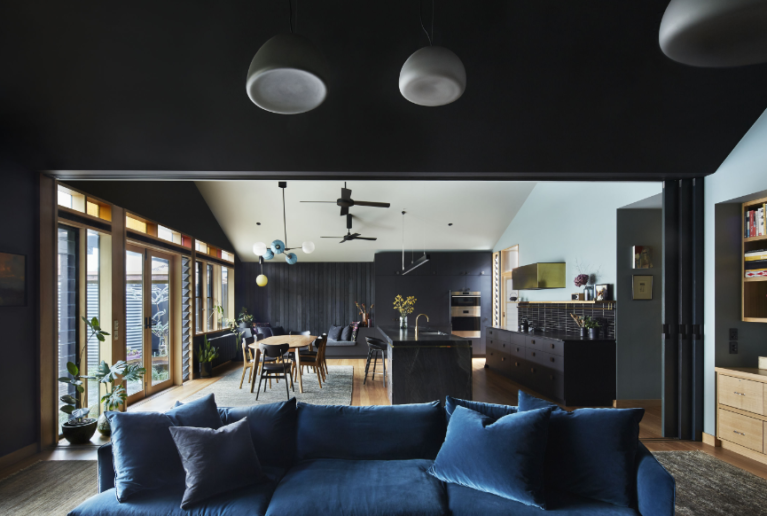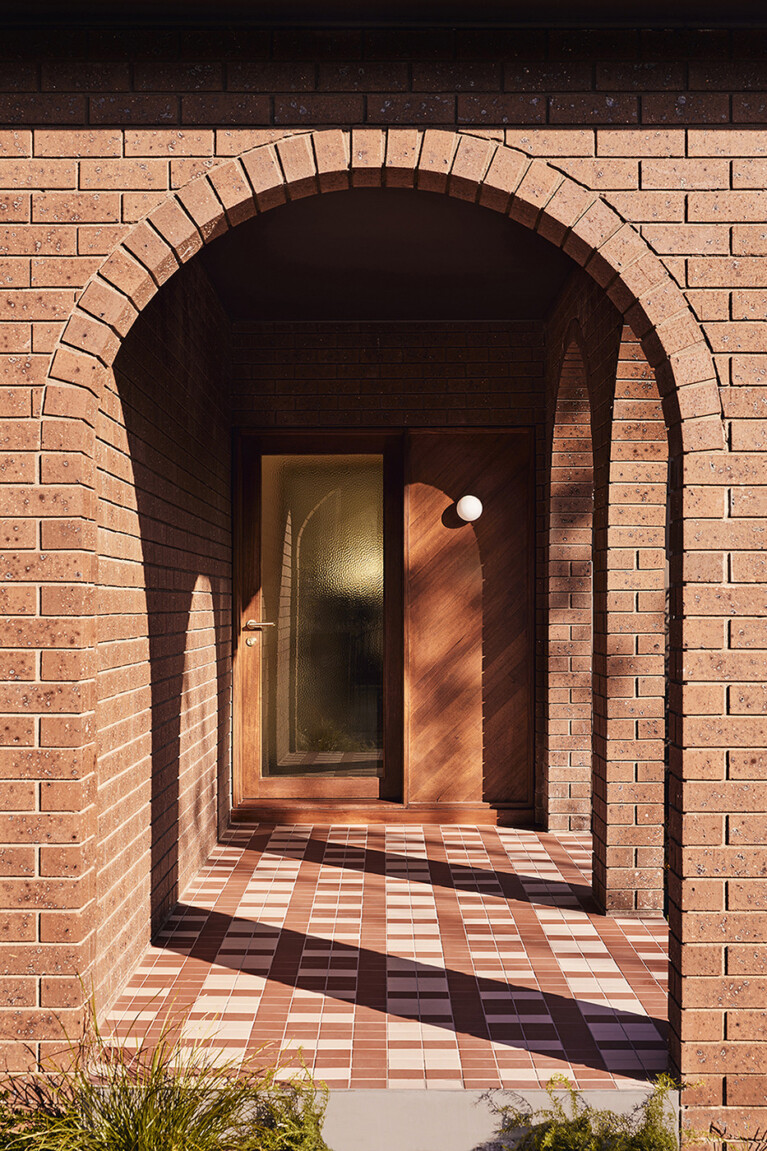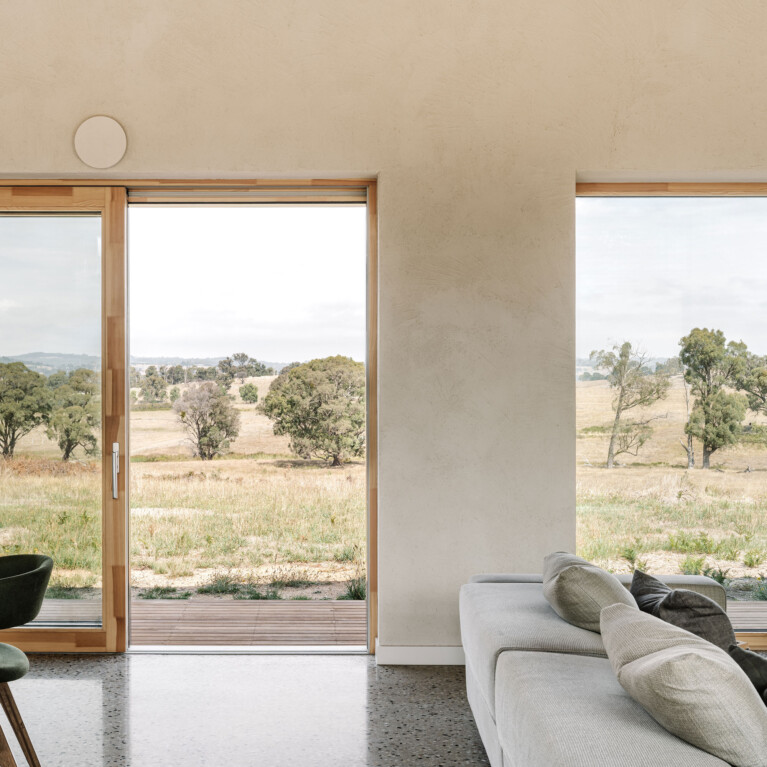A guide to commissioning an architect
Are you looking to renovate or build a new home and have considered using an architect but don’t know where to start? The best way to truly appreciate the benefits of engaging an architect is to hear straight from the architects and clients themselves, and in the homes they’ve created together. This is the premise of The Naked Architect.
Useful resources for finding an architect and other consultants is available at the bottom of this page.
The Naked Architect is presented by Open House Melbourne in partnership with the Architects Registration Board of Victoria and in association with ArchiTeam.
WATCH SERIES 4

The Naked Architect S4 E1:
dark house
The Rexroth Mannasmann Collective and their client invite you to step inside the doors of their project–dark house—to learn about the design process.
Watch now
The Naked Architect S4 E2:
Smith House
Fowler & Ward, their client and builder invite you to step inside the doors of their project–Smith House—to learn about the design and building process.
Watch now
The Naked Architect S4 E3:
Huff'n'Puff Haus
Hear from architect Talina Edwards of Envirotecture and her clients Pip and Stephen, about the process of designing an aspirational sustainable home in a regional location.
Watch nowWATCH SERIES 3
WATCH SERIES 1 + 2
WATCH NOW: The Naked Architect Season 1
Are you looking to renovate or build a new home and have considered using an architect but don’t know where to start? The best way to truly appreciate the benefits of engaging an architect is to hear straight from the architects and clients themselves, and in the homes they’ve created together. This is the premise of The Naked Architect.
Find an architect
From building a new home to developing a commercial space, finding the right architect that best suits your needs will help ensure your project’s success. The Architects Registration Board of Victoria (ARBV) has a range of information on their website to help you understand the process of working with an architect.
Before you engage an architect, it’s important to check that they are registered with the ARBV. Remember: If they are not registered with the ARBV, they are not an architect.
ArchiTeam is a membership association for Australian architects working in small, medium and emerging practices. Search through their database of members to find yourself an architect here.
The Australian Institute of Architects is the peak body that represents architects in Australia. Search through their database of members to find yourself an architect here.
Find a registered architectUnderstand the design process
1. Pre-design
The architect may help you prepare a project brief. The architect will provide advice about what is and is not possible on your site, any regulation and planning issues and your budget, along with a project schedule.At the end of this stage, you should broadly understand what is possible with your site and budget, and the architect should understand your requirements and objectives for the project.
2. Concept/sketch design
The architect will prepare preliminary drawings based on your initial brief. The architect may revise the drawings based on your feedback if they agreed to provide multiple drafts in the client–architect agreement. These drawings may be sketches or more formal drawings.
The architect may engage specialist consultants to better assess the restrictions and opportunities of your site.
The architect will provide further advice about your budget at this time.
At the end of this stage, you should be able to select a concept design for further development.
3. Design development
Once you have chosen a concept design, the architect will refine it. At this point, more specialist consultants may join the project team, and you will review your budget again.
At the end of this stage, you should have a preferred design for your project.
4. Town planning application
Depending on the site and scope of the project, you may need to apply for planning permission from a land management authority, typically your local council. Planning permission generally considers how the proposed building interacts with the neighbourhood character and impacts the local area and neighbouring properties.
The land management authority may advertise your application so people living near the site have an opportunity to voice any objections they may have to your proposed project. You may need to provide more information, make changes to your design, or apply for multiple permits for works (for example, demolition or subdivision). This process can be time-consuming, and your application may not be successful.
5. Construction documentation
The architect will finalise your design and create additional drawings and documentation needed to apply for a building permit. They will check the drawings and documentation against relevant building regulations and the endorsed town planning drawings as required. During this stage, the architect will typically help you to find a builder to undertake the project.
At the end of this stage, you should be able to issue architectural drawings of the project to prospective builders for pricing/tender.
6. Tendering and contractor selection
The architect will respond to the queries and requests for information from the builders who wish to tender for the project. The architect will then assist you to select a builder and negotiate any post-tender variations – this could include costs savings, revised time frames, or changes to contract conditions.
At the end of this stage, you should be able to appoint a builder to construct your project.
7. Building contract administration
If the architect is engaged to administer the building contract, the role of the architect changes at this point. From here, the architect focuses on making sure you and the builder both meet your responsibilities as outlined in the building contract (between you and the builder).
The architect may assist you appointing a building surveyor. The builder or the architect applies to the building surveyor for the building permit.
At the end of this stage, you should have an occupancy permit or notice of final inspection issued by a building surveyor.
8. Practical completion
Once the building surveyor has issued an occupancy permit, the architect will assess the building. They will determine if the works are complete and whether there any defects or incomplete works.
If the architect determines that the works are complete and any defects are minor, they will certify that it is complete in accordance with the plans and specifications, although the builder will still need to fix any minor defects. If the architect determines that there are major issues, the builder must fix them prior to the building being certified complete.
The architect’s certification of practical completion triggers the start of the defect liability period.
9. Defect liability period (post-occupancy)
During the defect liability period, the builder must fix any identified problems that they are responsible for, according to the contract. The length of this period can vary, depending on what is agreed in the contract. The period extends if the builder doesn’t fix the identified problems in time.
At the end of this stage, the builder should have fixed any incomplete or defective works.
This phase typically ends with completion of the defect liability period.
10. Final certificate
Once the defect liability period has finished, the architect issues a final certificate and the builder’s warranty begins – you are covered for six years for structural defects and two years for non-structural defects.
Other consultants you might need

Urban Planners
Urban planners propose strategies and seek to balance competing issues in favour of sustainability and net community benefit.
Engage an urban planner
Builders
If you’re looking to hire a building practitioner, it’s important to make sure they are registered to do the work you need.
Find a builder
Structural Engineers
Structural engineers specialise in structural analysis and design of bespoke structures and buildings
Engage a structural engineer
Landscape Architects
Landscape architects advise on plan, design and oversee the creation of gardens and landscapes.
Find a landscape architect
Additional resources
Building or renovating your home can be complex.
If you are undertaking any building work on your property, you’ll need to find out whether your project requires a planning permit, a building permit, or both. Your architect will guide you on what permits are required.
Before selecting an architect to work with, consider your priorities and whether the architect you are considering is the right architect for your project. This checklist may assist you with this decision.
Building and renovating checklist








